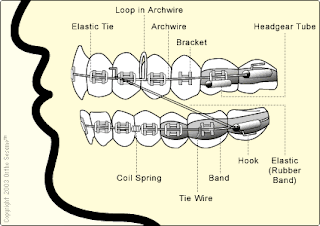 Usually patients in orthodontic treatment at Weiss Orthodontics already have their permanent teeth – they are pre-teens, teens and adults. But in some cases we have to start treatment earlier, even before the patient’s permanent teeth come in. We call this “two-phase treatment.”
Usually patients in orthodontic treatment at Weiss Orthodontics already have their permanent teeth – they are pre-teens, teens and adults. But in some cases we have to start treatment earlier, even before the patient’s permanent teeth come in. We call this “two-phase treatment.” When we have patients with clear developmental problems at an early age, it’s best to start work when they are young, before the problems get bigger and more difficult to treat.
Examples include:
• An upper or lower jaw that is not growing correctly
• A mouth growing in a way that doesn’t leave enough room for all the permanent teeth to come in
• A severe malocclusion, or bad bite, which means the jaw doesn’t fit together correctly
In these cases we will start early and do one round of treatment – phase one – while the patient still has their baby teeth. Phase one usually does not involve braces, but can include a different type of appliance that helps the jaw grow into place properly. We’ll follow up with phase two usually a few years later, when permanent teeth are in place. Generally phase two involves standard braces.
In order to catch early problems, we recommend that children have an orthodontic check-up no later than age seven (and so does the American Association of Orthodontists). However, if your dentist or pediatrician sees any sign that early treatment might be necessary, he or she may recommend your child visit our office even sooner.
If you have additional questions, give our office a call!







